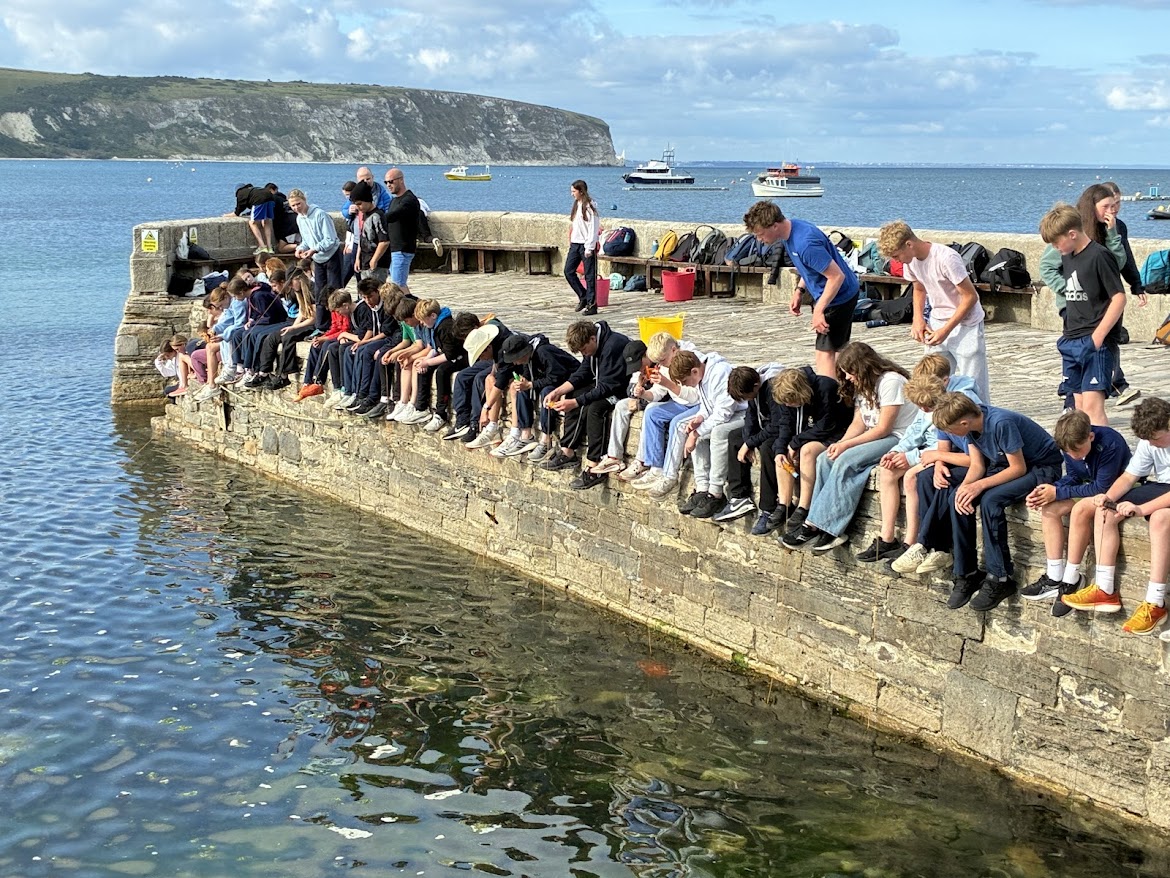Heather the Zoolab ranger came in to talk to Form 1 about the Rainforest. She talked to them about the Layers of the Rainforest and asked them to describe the habitat of the forest floor.
The first creature was Alan the Giant African Land snail. He is 6 years old. He has eyes on the end of his antennae but he can’t see very well because he lives on the dark forest floor. But he has adapted by having 2 noses to help him smell and find his food! He uses his 10,000 teeth to lick and scrape his food up. He was quite slimy because he uses his slime to stick to things and move along as he just has one foot. Heather told us that there is often some snail slime in moisturising cream! His shell is always growing and he will never, ever leave his shell as it is attached to him and he could grow to the size of a football!
 Our animal adventure took us to the forest floor to see animal no 2. She was an arachnid. Form 1 had to be very quiet in order to see this 8-legged, hairy creature. Heather said she was a venomous creature not a poisonous one. The difference is that a venomous creature bites or stings you in order to inject the venom but a poisonous creature has the poison on them and it can be transferred to you. This creature was revealed to be Tilly the Chilean-Rose Tarantula. She is very clever as she feels and ‘hears’ using the hairs on her body. She can even smell and taste with her hair. She prefers to flick her hairs off and cause intense itching to predators rather than biting them. Therefore the children were only allowed to look, not touch her! She eats insects by injecting her fangs into her prey, and sucking the insect a bit like making insect soup! In addition to her 8 legs, she also has 8 eyes – so she can see 360 degrees. She could live for a whole year without eating! Males can live for 5-10 years but females can live for 20-25 years.
Our animal adventure took us to the forest floor to see animal no 2. She was an arachnid. Form 1 had to be very quiet in order to see this 8-legged, hairy creature. Heather said she was a venomous creature not a poisonous one. The difference is that a venomous creature bites or stings you in order to inject the venom but a poisonous creature has the poison on them and it can be transferred to you. This creature was revealed to be Tilly the Chilean-Rose Tarantula. She is very clever as she feels and ‘hears’ using the hairs on her body. She can even smell and taste with her hair. She prefers to flick her hairs off and cause intense itching to predators rather than biting them. Therefore the children were only allowed to look, not touch her! She eats insects by injecting her fangs into her prey, and sucking the insect a bit like making insect soup! In addition to her 8 legs, she also has 8 eyes – so she can see 360 degrees. She could live for a whole year without eating! Males can live for 5-10 years but females can live for 20-25 years.
Our 3rd animal was Henry the tortoise who is also a forest floor dweller and is 8 years old. He is a reptile because he’s cold blooded, he’s covered in scales and the females lay eggs. As he is cold blooded he uses the sun for his warmth. He has long claws to help him to dig and grip onto the forest floor. In the rainforest the most common tortoise is the red-footed tortoise, another herbivore who only eats leaves and plants. Henry even went for a wonder around the classroom, although at a very slow and steady pace! The biggest tortoise in the world is the Galapagos tortoise; the largest known was over 5 foot long and the oldest tortoise was 250 years old.
Next we visited the understory. Heather’s 4th animal was introduced as a 6-legged insect, a cave-dweller that likes to scuttle around on the cave floor…. It was Cuthbert the Madagascan hissing cockroach! The children loved learning that cockroaches live on cave floors as they like to eat animal poo! This is a very clever part of the ecosystem – without cockroaches our world would be full of rubbish. They have been keeping our world clean for 300 million years. Cuthbert could run straight through fire and he would be fine! He could be in the freezer for 2 years and he would survive! You can identify a male cockroach as they have bumps on their heads where their horns are. If cockroaches become decapitated they can still live for 14 days as they are very tough bugs and have two brains!
Animal 5 was from the canopy. He has sticky toes as in the wild he would spend his whole life in the canopy travelling from tree to tree. Avocado was his name and he was a white tree frog. He is an amazing jumper and couldn’t come out of his box as he might jump onto the ceiling and we wouldn’t be able to get him down! He can jump 30 times his body height! Being an amphibian he can breathe both in and out of water. He lays his eggs spawn in the trees in amongst large leaves with water. They have a life span of 10-12 years. The males and females both look the same, one of the only ways you can tell the difference is by the noise the males make.
Finally, Heather explained that she couldn’t bring a snake from the Rainforest as they are far too big – but she brought a snake from America – the American Corn Snake. All snakes are carnivores – corn snakes are found in corn fields because they eat rats and mice that live there.
Ruby the Corn snake was a rescue snake and is about 8 years old and she eats mice once a week and eats them whole!! This is possible because she has a quadrate bone in her mouth that is already dislocated and floats in cartilage – so it is an urban myth that snakes dislocate their jaws! However, she can go 6 months without eating at all! She has 400 bones in her body.
Form 1 very much enjoyed meeting all the Rainforest creatures today and learnt a huge amount in just one hour – thank you Heather and Zoolab!









